Some mornings just hit different, especially when my Papa would transform our leftover rice into his signature Java Rice for breakfast. I watched him turn our ordinary sinangag into this gorgeous golden creation that made even the simplest ulam feel restaurant-worthy.
That vibrant yellow hue, dancing with specks of toasted garlic and shallots, became our weekend breakfast tradition. You know how Aristocrat Restaurant made Java Rice famous? Well, my Papa's version rivals that iconic taste, and today I'm sharing our family's take on this Filipino breakfast upgrade that's been perfected over countless morning cookouts.
I still remember the way our kitchen would fill with that irresistible aroma of butter-toasted rice mingling with turmeric and atsuete, signaling to everyone that breakfast wasn't just breakfast, it was going to be a feast.
Once you master this Java Rice recipe, your typical garlic rice will feel underdressed for the party. Whether you're pairing it with tocino, longganisa, or your favorite tapsilog, this recipe transforms your everyday sinangag into something that would make any turo-turo proud.
It's so much easier and cheaper than going out for that restaurant-style Java Rice you're craving.
Jump to:
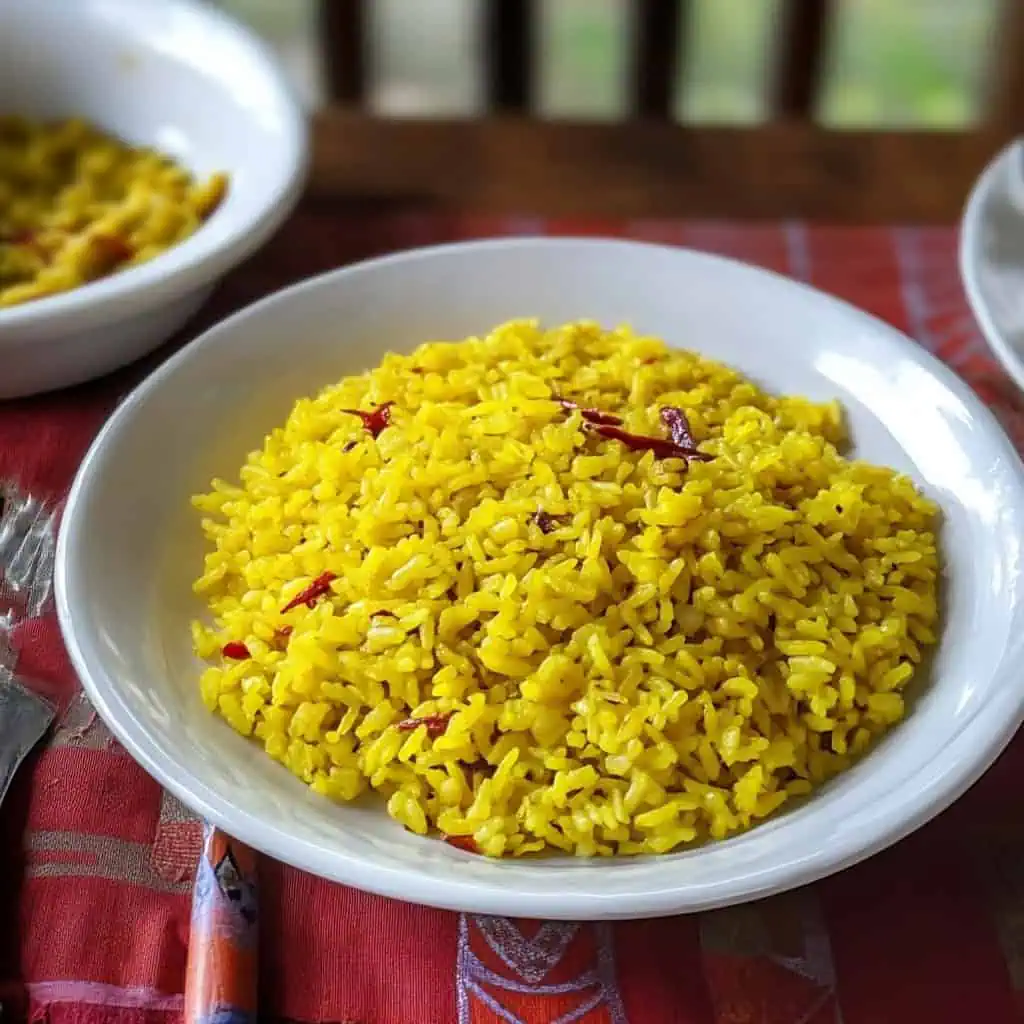
Why You'll Love This Recipe
- Restaurant Quality: Achieve that signature Aristocrat Restaurant taste at home
- Budget-Friendly: Uses simple ingredients you likely already have
- Versatile: Pairs perfectly with any Filipino dish, especially grilled meats
- Make-Ahead Friendly: Actually better with day-old rice
- Foolproof Method: Detailed steps ensure perfect results every time
Ingredients
The ingredients in this Java Rice create the perfect balance of flavor and visual appeal. Cold rice provides the ideal texture, preventing mushiness when fried. Butter adds richness while turmeric and annatto create that signature golden color that makes Java Rice instantly recognizable.
Shallots and garlic form the aromatic base, with red bell pepper adding a pop of color and subtle sweetness. Soy sauce brings umami depth without overwhelming the dish.
This combination transforms simple leftover rice into a vibrant side that complements grilled meats and Filipino breakfast classics, while staying true to the beloved Aristocrat Restaurant flavor that Filipinos have enjoyed for generations.
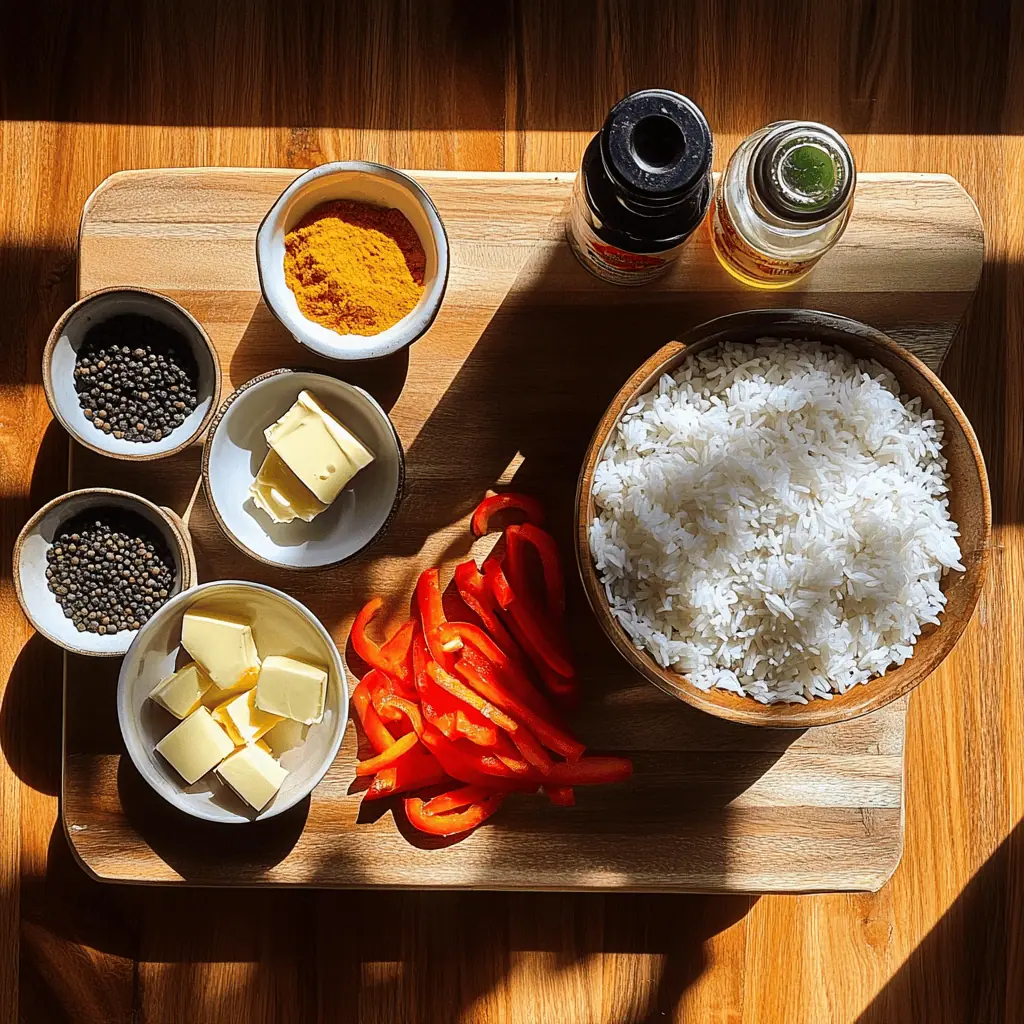
- 4 cups cold cooked rice
- 1 tablespoon butter
- 1 tablespoon cooking oil
- 2 shallots, finely chopped
- 2 cloves garlic, minced
- ½ red bell pepper, finely chopped
- ½ teaspoon annatto powder (atsuete)
- 1 teaspoon turmeric powder
- 1 tablespoon soy sauce
- Salt and pepper to taste
Equipment
- Large wok or wide skillet - Provides ample space to toss rice without spilling and ensures even cooking
- Wooden spatula - Helps gently combine ingredients without breaking rice grains
- Measuring spoons - For precise spice measurements
- Cutting board and knife - For preparing vegetables
- Airtight container - For storing leftovers

How To Make
- Break up the cold cooked rice into individual grains using your fingers, removing any clumps. This step works best with rice that has been refrigerated for at least 24 hours.
- Heat a wok or wide skillet over high heat (around 375°F/190°C). Add butter and cooking oil, allowing the butter to melt completely while swirling to combine.
- Once the oil is hot and shimmering, add finely chopped shallots, minced garlic, and finely chopped red bell pepper. Sauté until the vegetables have softened and become fragrant, about 2 minutes, stirring frequently to prevent burning.
- Add the annatto powder and turmeric powder to the aromatics. Stir continuously for 30 seconds to bloom the spices and release their flavors and vibrant colors.
- Add the cold rice to the pan and toss until each grain is evenly coated with the yellow-colored oil mixture. Spread the rice evenly in the pan and let it sizzle undisturbed for 45 seconds to develop a slight toasting on the bottom.
- Pour in the soy sauce and season with salt and pepper to taste. Continue cooking for another 1-2 minutes, tossing occasionally until the rice is heated through and has absorbed all the flavors.
- Serve hot alongside your favorite Filipino breakfast dishes or grilled meats.

Tips from Lola's Kitchen
- Use truly cold rice - Rice that's been refrigerated overnight has the perfect moisture level and texture
- Break up rice clumps while the rice is still cold to ensure even cooking and flavor distribution
- Bloom your spices in oil before adding rice to maximize their color and flavor
- Use high heat to achieve that signature slightly toasted flavor and prevent sogginess
- Don't overcrowd the pan - Cook in batches if making a large amount
- Keep it moving - Regular but gentle tossing ensures even coloring without breaking the grains
- Season at the end - Add soy sauce after rice has been coated with spices for better color development
Substitutions
- Shallots: White or red onions work well, though they'll have a slightly stronger flavor
- Fresh turmeric: Use ½ teaspoon additional turmeric powder
- Annatto powder: Annatto oil or a pinch of saffron (though more expensive)
- Butter: Can use all cooking oil, but you'll miss the rich flavor butter provides
- Bell pepper: Carrots, corn, or peas add nice color and texture
- Soy sauce: Light fish sauce (patis) or salt can work in a pinch
Troubleshooting
- Rice too mushy? Your rice might have been too fresh or you added too much liquid. Use less soy sauce and ensure rice is completely cold before cooking.
- Color not even? Mix spices thoroughly with oil before adding rice to ensure even distribution.
- Rice keeps clumping? Break rice grains more thoroughly before cooking and use higher heat to help separate the grains.
- Not yellow enough? Your turmeric or annatto may be old. Fresh spices provide the best color, or you may need to add slightly more.
- Too salty? Balance with a squeeze of lemon juice and reduce soy sauce next time.
Storage & Reheating
Storage:
- Refrigerator: Store in an airtight container for up to 3 days
- Freezer: Portion and store in freezer bags for up to 3 months
Reheating:
- Microwave Method:
- Sprinkle with a few drops of water
- Cover with a damp paper towel
- Heat in 30-second intervals, stirring between each
- Pan Method (Recommended):
- Heat 1 tablespoon oil in a pan over medium-high heat
- Add rice and stir frequently until hot throughout
- Add a splash of water if rice seems dry

FAQ
Can I use fresh rice instead of day-old rice?
While possible, day-old rice works significantly better as it has less moisture. If you must use fresh rice, spread it on a baking sheet and refrigerate for at least 1 hour before cooking.
Why isn't my rice yellow enough?
Ensure you're using fresh turmeric powder and enough annatto. Older spices lose their coloring power. Bloom spices in hot oil before adding rice for maximum color extraction.
Can I make this in advance for a party?
Yes! Java rice actually maintains its quality well and can be made up to 2 days ahead. Reheat gently in a pan with a bit of oil, or in the microwave with a few drops of water.
Is there a way to make this healthier?
Use brown rice instead of white rice, reduce the butter amount, and add more vegetables like carrots, peas, and corn.
Can I use turmeric paste instead of powder?
Yes, use about 1 teaspoon of fresh turmeric paste in place of powder. It will provide even better color and a slightly more complex flavor.
How do I know when the rice is done?
The rice should be hot throughout, with some grains having a slightly toasted appearance and a fragrant aroma. It usually takes 3-4 minutes of cooking after adding cold rice to the pan.
Can I double the recipe?
Absolutely, but cook in batches to maintain the proper texture. Overcrowding the pan leads to steaming rather than frying.
What makes Java Rice different from regular fried rice?
The signature yellow color from turmeric and annatto, plus its specific pairing with Filipino grilled dishes, sets it apart from other Asian fried rice varieties.
Related
Looking for other recipes like this? Try these:

Filipino Java Rice (Sinangag na Dilaw)
Ingredients
- 4 cups cold cooked rice malamig na kanin
- 1 tablespoon butter mantikilya
- 1 tablespoon cooking oil mantika
- 2 shallots finely chopped (sibuyas tagalog)
- 2 cloves garlic minced (bawang)
- ½ red bell pepper finely chopped (pulang bell pepper)
- ½ teaspoon annatto powder atsuete
- 1 teaspoon turmeric powder
- 1 tablespoon soy sauce toyo
- Salt and pepper to taste asin at paminta
Instructions
- Start by breaking up the cold cooked rice (malamig na kanin) into individual grains using your fingers, removing any clumps. This step works best with rice that has been refrigerated for at least 24 hours.
- Heat a wok or wide skillet over high heat (around 375°F/190°C). Add butter (mantikilya) and cooking oil (mantika), allowing the butter to melt completely while swirling to combine.
- Once the oil is hot and shimmering, add finely chopped shallots (sibuyas tagalog), minced garlic (bawang), and finely chopped red bell pepper (pulang bell pepper). Sauté until the vegetables have softened and become fragrant, about 2 minutes, stirring frequently to prevent burning.
- Add the annatto powder (atsuete) and turmeric powder to the aromatics. Stir continuously for 30 seconds to bloom the spices and release their flavors and vibrant colors.
- Add the cold rice to the pan and toss until each grain is evenly coated with the yellow-colored oil mixture. Spread the rice evenly in the pan and let it sizzle undisturbed for 45 seconds to develop a slight toasting on the bottom (hanggang bahagyang magkulay tostado).
- Pour in the soy sauce (toyo) and season with salt and pepper (asin at paminta) to taste. Continue cooking for another 1-2 minutes, tossing occasionally until the rice is heated through and has absorbed all the flavors.
- Serve hot alongside your favorite Filipino breakfast dishes or grilled meats. For storage, keep in an airtight container in the refrigerator for up to 3 days. When reheating, sprinkle with a little water and heat in a pan over medium-high heat, stirring frequently until hot.
Tips from Lola's Kitchen
- Always use day-old rice (rice stored in the refrigerator for at least 24 hours)
- Break up rice clumps while the rice is still cold
- Use high heat to achieve that slightly toasted flavor
- Don't overcrowd the pan - cook in batches if needed
- Use wooden spoons to prevent breaking the rice grains
Nutrition
The Story Behind Filipino Java Rice
There's something magical about the way a plate of golden Java Rice can transform an ordinary meal into a feast for both the eyes and palate. This vibrant yellow fried rice, known locally as "Sinangag na Dilaw," has become an iconic fixture in Filipino cuisine, particularly through its association with the legendary Aristocrat Restaurant in Manila.
The story of Java Rice begins in the 1930s when the Aristocrat Restaurant, founded by Engracia Cruz-Reyes, first introduced this distinctive yellow-hued rice to complement their famous chicken barbecue. While its name might suggest Indonesian origins (Java being Indonesia's main island), this beloved side dish is a purely Filipino innovation that showcases our culture's talent for culinary adaptation and creativity.
The inspiration behind Java Rice reportedly came from the restaurant's desire to elevate the simple garlic fried rice (sinangag) that was already a breakfast staple in Filipino homes. By incorporating turmeric (luyang dilaw) and annatto (atsuete) – spices that were traditionally used in Indonesian and Malaysian cuisine – they created a dish that would become synonymous with special occasions and family gatherings.
What makes Java Rice particularly special is its role in the Filipino food narrative. Unlike plain steamed rice that serves as a neutral canvas, Java Rice stands proudly on its own while still complementing grilled meats perfectly. The dish exemplifies the Filipino knack for transforming humble ingredients into something extraordinary – taking leftover rice and turning it into a coveted side dish that people specifically seek out.
In modern Filipino cuisine, Java Rice has evolved beyond its restaurant origins to become a beloved home-cooked dish. Its popularity spans from simple family dinners to grand celebrations, and from street-side barbecue stands to high-end restaurants. The dish's versatility shines through its ability to pair perfectly with everything from breakfast longganisa to dinner-time inihaw na liempo (grilled pork belly).
Today's home cooks have embraced Java Rice as their own, often adding personal touches while maintaining its signature golden color. Some add frozen mixed vegetables for extra nutrition, while others increase the garlic for a more pronounced flavor. Yet, the essence remains the same – that distinctive yellow hue that promises a meal that's anything but ordinary.
The beauty of Java Rice lies not just in its color, but in its ability to elevate any meal it accompanies. Whether it's served alongside street-style barbecue or plated in fine dining establishments, this golden rice has earned its place in the pantheon of Filipino cuisine. It's a testament to how a simple variation in preparation and the addition of a few key ingredients can transform an everyday staple into something truly special.
For many Filipinos, both at home and abroad, Java Rice represents more than just a side dish – it's a taste of celebration, a reminder of family gatherings, and proof that some of the best culinary innovations come from thinking creatively about everyday ingredients. Whether you're recreating the famous Aristocrat Restaurant version or putting your own spin on it, each plate of Java Rice carries forward a tradition of turning the ordinary into the extraordinary.
This versatile dish continues to win hearts across generations, proving that some culinary traditions only get better with time. As Filipino cuisine gains more recognition globally, Java Rice stands as a shining example of our food culture's ability to take simple ingredients and transform them into something uniquely delicious and memorably Filipino.
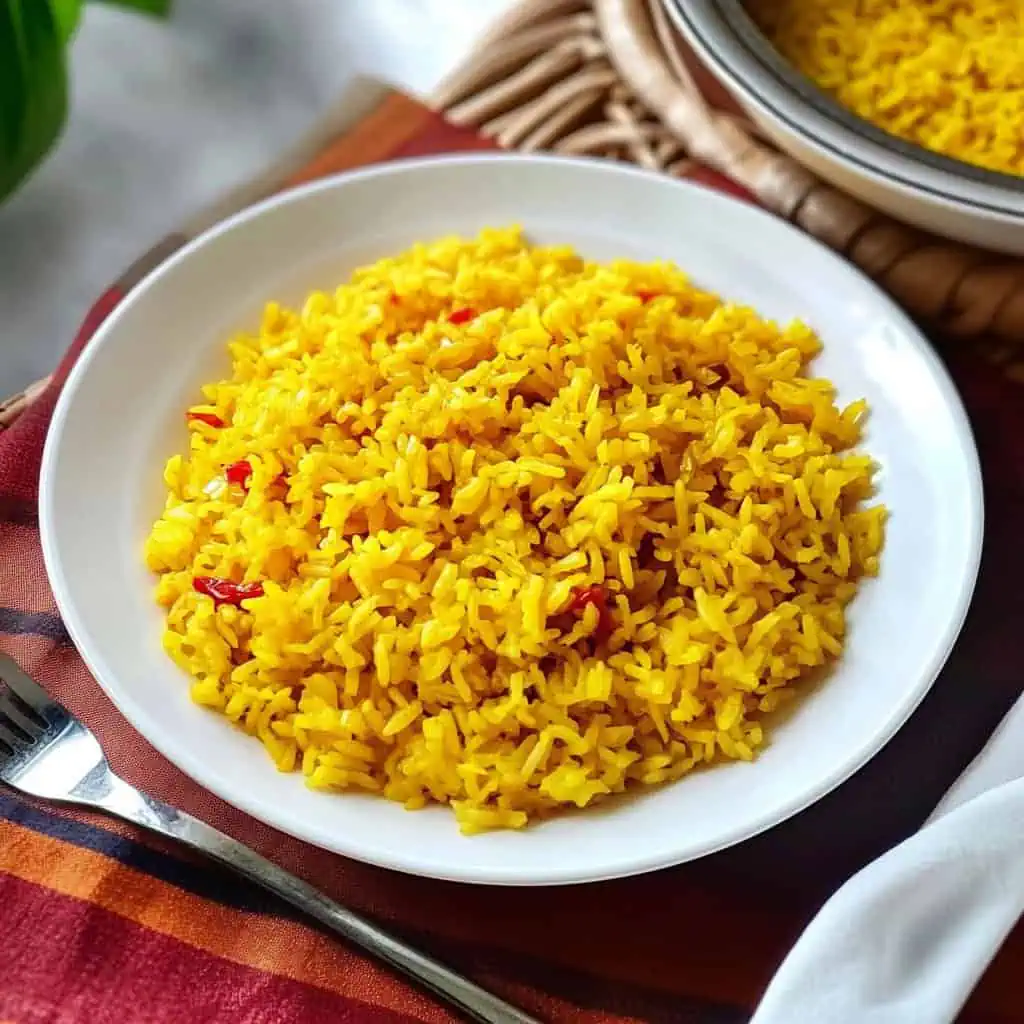






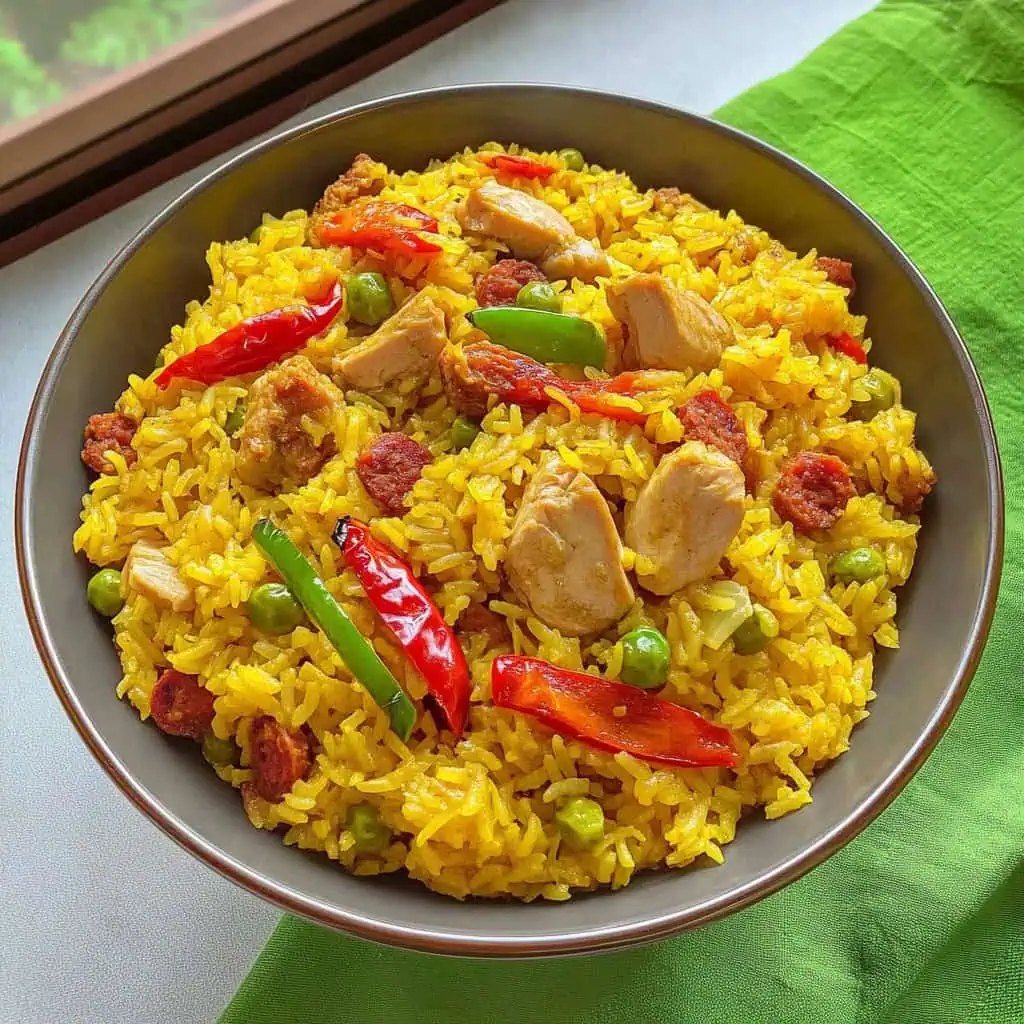
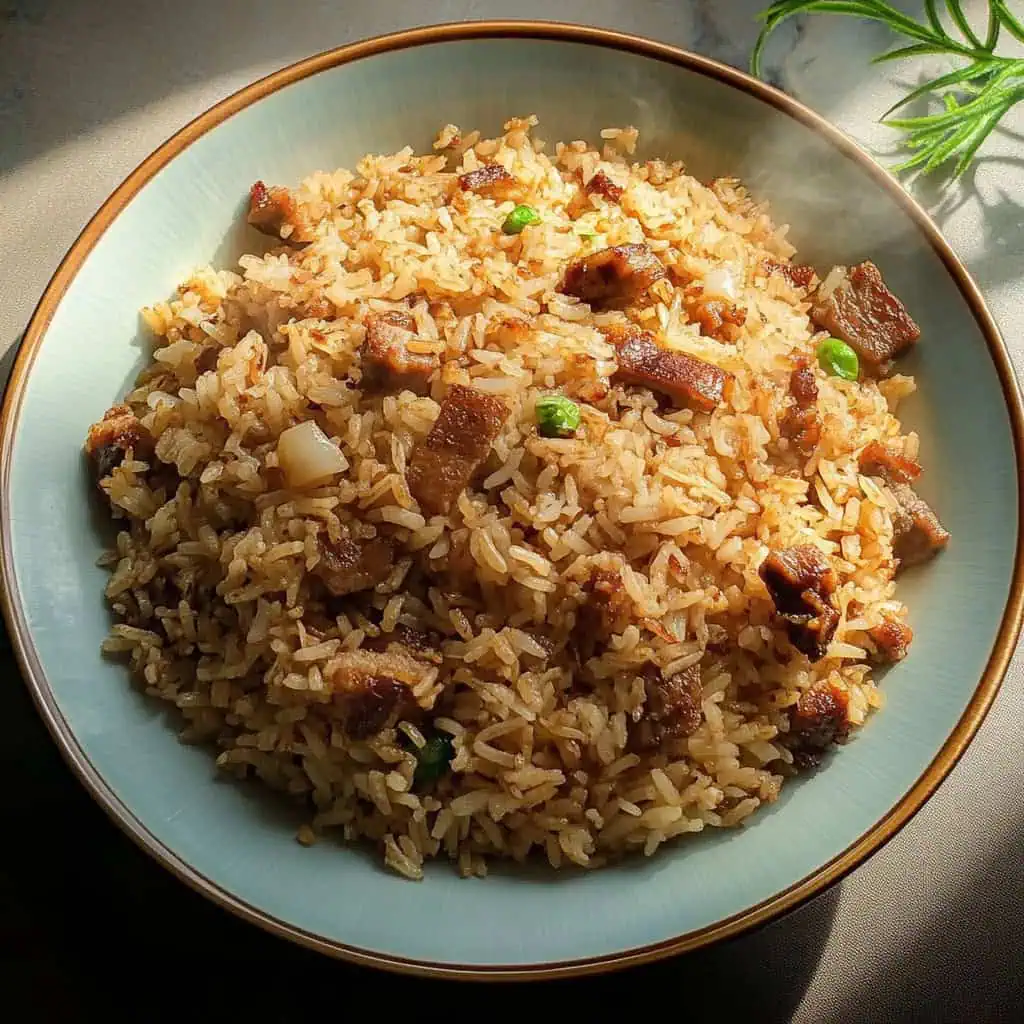
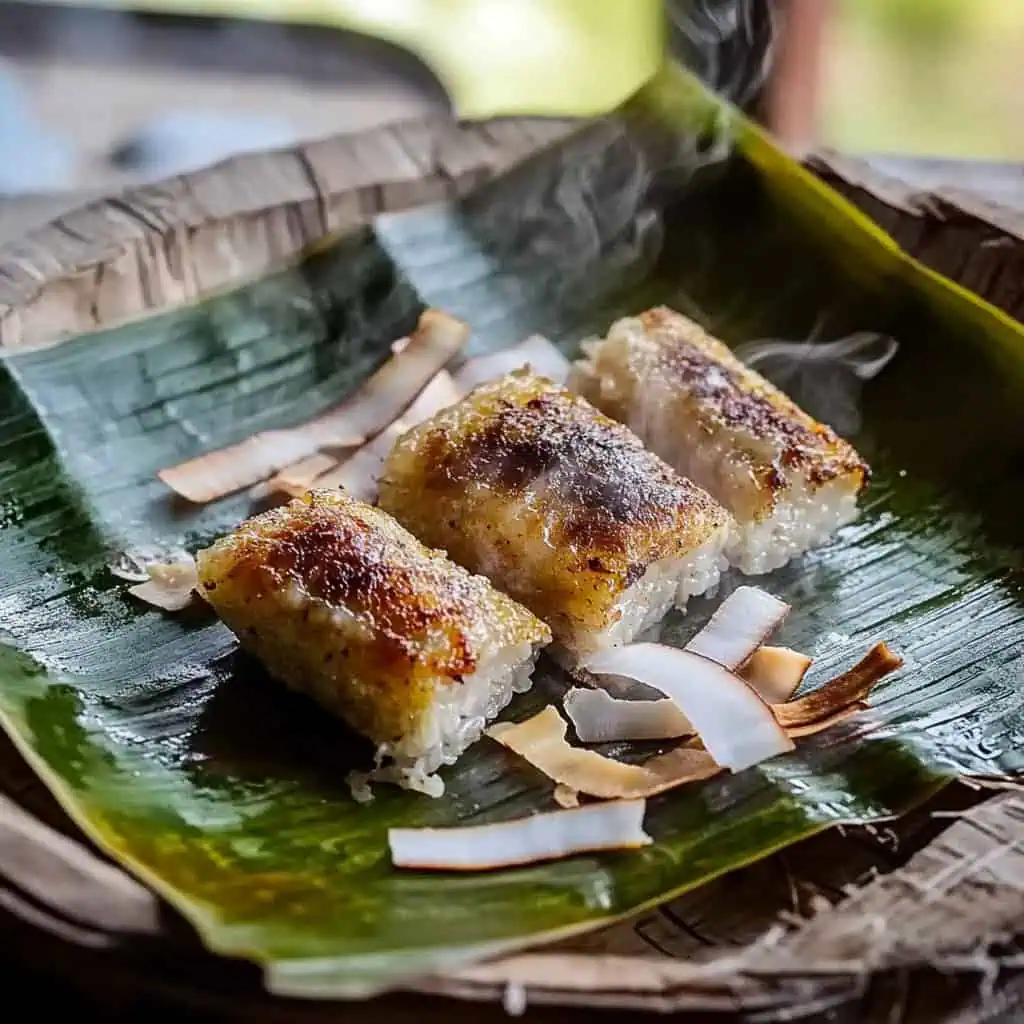
Comments
No Comments